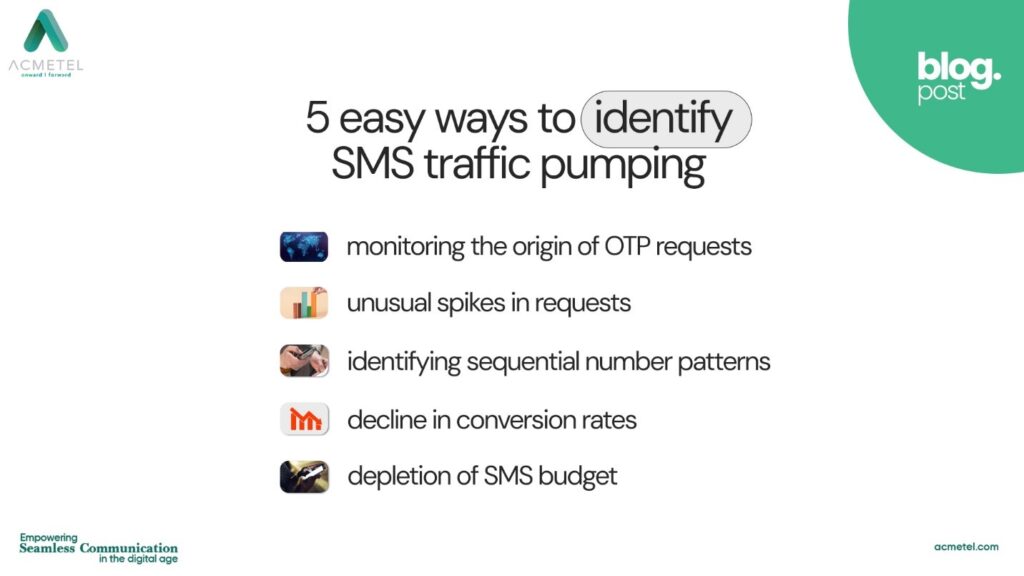Managing SMS fraud has become a routine challenge for businesses, ranging from dealing with smishing to addressing SIM swapping. Both enterprises and individuals are increasingly vigilant and prepared to combat SMS scammers.
However, SMS pumping poses a unique threat, mainly targeting businesses relying on SMS for OTPs. Detecting SMS pumping fraud can be challenging, and many companies fall victim without even realizing it. In this blog, we’ll delve into the fundamentals of SMS pumping, highlight key indicators to watch for, and provide proactive measures to safeguard your business from falling prey to this scam.
How Does SMS Pumping Fraud Operate?
In essence, scammers target businesses that rely on SMS for sending OTPs to customers, choosing them as the victims of SMS pumping. They initiate the attack by sending false OTP requests with a sequence of similar numbers, creating an illusion of legitimate user requests. In reality, a significant portion of this traffic is malicious.
This deceptive tactic leads businesses to suffer costs for fake traffic unknowingly. Detecting SMS pumping is not always easy, and many companies may unknowingly allocate most of their budget to fraudulent traffic.
To identify if your business is a target of SMS pumping, look for five red flags in your SMS traffic that could trigger suspicions about the authenticity of the requests.
5 Easy Ways to Identify SMS Traffic Pumping

- Monitoring the Origin of OTP Requests
Since you’re familiar with your customer base and their locations, an indication of potential SMS pumping fraud is receiving OTP requests from countries or regions uncommon for your regular traffic. This might suggest fraudulent activity by a scammer trying to manipulate the system. - Unusual Spikes in Requests
Have you observed sudden surges in OTP requests on certain days? This might indicate that a fraudster is bombarding you with counterfeit OTP requests to boost your traffic and potentially engage in fraudulent activities artificially. - Identifying Sequential Number Patterns
Observing a string of OTP requests from numbers with sequential similarities indicates that someone is employing SMS traffic pumping to deceive your business. The probability of multiple individuals with nearly identical phone numbers simultaneously sending OTP requests is extremely low. - Decline in Conversion Rates
If you’ve observed that your conversion rates on OTPs are consistently lower than anticipated, it could indicate SMS pumping fraud. Fraudsters may be sending requests, and although you unintentionally provide them with PINs, no genuine interaction follows. Monitor your usual conversion rate within your region, considering variations from country to country. A significant, for instance, a 30% drop in conversion rates for your SMS OTP requests may signal the impact of SMS pumping fraud on your business. - Depletion of SMS Budget
The surge in OTP requests to illegitimate numbers, a characteristic of SMS traffic pumping, often leads businesses to exhaust their SMS budget rapidly. If you observe a quick reduction of funds allocated for SMS, it strongly indicates that your business is a target of SMS pumping fraud.
If you’ve observed any of these occurrences, it may indicate that your business is under the threat of SMS pumping fraud. Assigning control over your SMS traffic and implementing measures to block these fraudulent activities is crucial.








